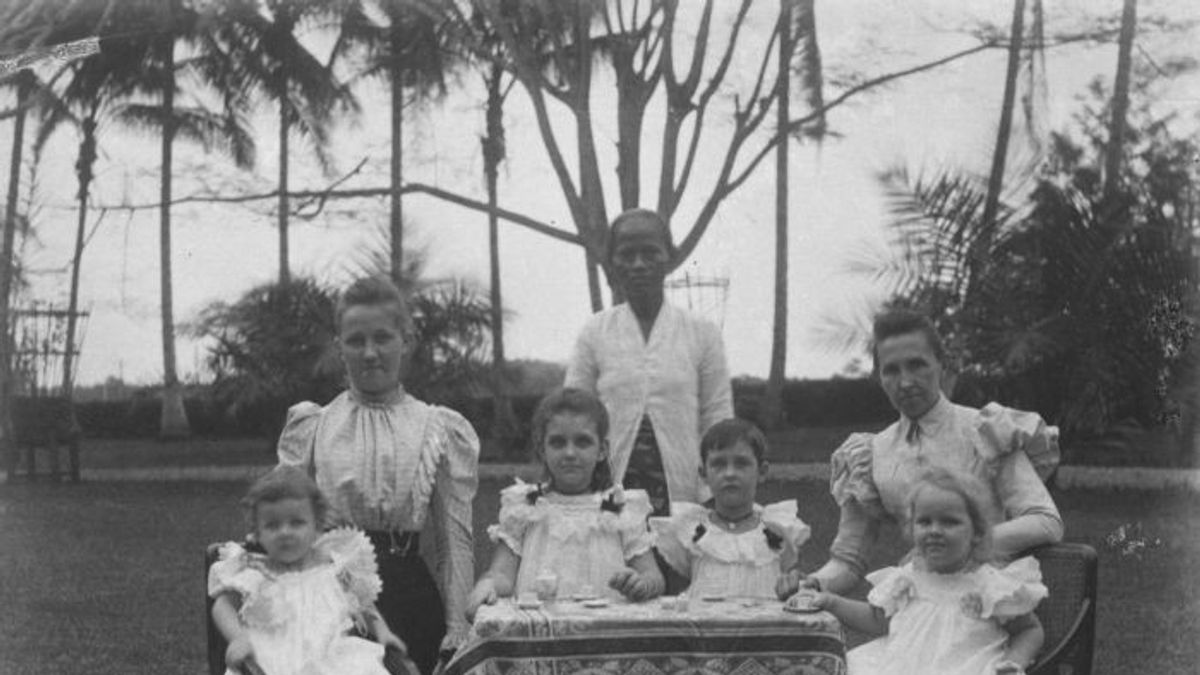JAKARTA - The Dutch trading company VOC fully supports slavery. The slavery scheme is believed to be able to promise abundant profits. The slaves worked reliably in all fields. From cooks to carpenters. Hence, having many slaves was considered a sign of prosperity. But the fate of the slaves was the opposite. They are treated like animals. One little, sadistic punishment awaits. Not a few died. The portrait shows slavery was a dark period of Dutch colonialism.
The presence of the VOC is widely known as the originator of Dutch colonialism in the archipelago. The Company's ambition was to build a Dutch-style city in the colony in 1619. It was all thanks to the conquest of Jayakarta. On the ruins of Jayakarta, cities resembling cities in the Netherlands stand.
Batavia, the name. However, the development of Batavia was not an easy matter. Of course, plans to build a city will only work in harmony if cheap labor is available. Brainstorming company. The option of bringing in slaves from all over Asia is the solution.
The development of Batavia was boosted. The Dutch were greatly helped by the presence of the slaves. It was almost certain that without their help, a series of buildings, canals and Batavia castles would not have been built. Because, the ability of a slave to work is so amazing.
They are reliable in all areas. After all they can get more work done than the Dutch. Moreover, the Dutch at that time still had difficulty adapting to the tropical climate typical of the archipelago. Since then, dependence on slaves has become more and more intense. And the VOC saw for themselves the opportunities of the slave trade. The Company did not waste the opportunity to become a slave master in Batavia.
“The slaves were the single largest population group in Batavia until the last half of the 18th century. However, because they came from various places, it was only their status that became a kind of unifier. VOC law forbade taking Javanese as slaves because they were afraid that the Javanese would unite against the Europeans. For menial work, the VOC preferred to import slaves in large quantities from outside.”
“It provided a security advantage because slaves from far and wide places had less chance of uniting. In the beginning, these slaves were mostly imported from South Asia with connections to the VOC trade,” said Susan Blackburn in the book Jakarta: 400 Years of History (2012).

The majority of the slaves brought by the VOC came from Bengal, Malabar, and Coromandel. Gradually, the Company discovered the fact that bringing in slaves from within the country--other than the Javanese--was much more profitable.
The war between the kingdoms of the archipelago became the origin. Which side wins will control the entire population of the kingdom. Most of them were then sold into slavery. The Company then offered to redeem the prisoners of war. In addition, the Company also redeemed many slaves sold by the Bumiputra nobles because they were unable to pay their debts.
The VOC's profits were abundant due to the local slave trade. The cost of bringing slaves to Batavia was relatively cheap. The Company only needed time to go around Manggarai, Bali, Arakan, to Sulawesi to get local slaves.
The arrival of slaves in Batavia was only a few weeks at most. Unlike Indian slaves which can take up to months. The local slaves were then sold (also auctioned) in Batavia to be employed in all fields, according to the wishes of their new master. Some slaves were usually used as cooks, tailors, messengers, horse stable guards, to play music.
“The lives of free citizens (Europeans) are different. Many of them live as graceful and similar activities that give them a lot of free time. Almost all the free citizens were former Company employees.”
“And Batavian society consisted of newly rich people who liked to show off their wealth with a lowly taste. It was considered a sign of prosperity to have many slaves and leave all work and affairs, even the education of children, to servants,” wrote Bernard HM Vlekke in the book Nusantara (1961).
Slave Torture
Slaves brought in by the VOC were often hunted by wealthy Europeans, Chinese, Portuguese and Arabs. The slaves also later became a symbol of wealth that determined a person's social status in society. In other words, whoever has the most number of slaves, then he is the most honorable. A single wealthy landlord could own 100 slaves or more.

Perhaps for Europeans owning slaves was very helpful for getting rich. But not for slaves. Instead of a splash of wealth and prosperity. The treatment of slave owners, especially Europeans, tended to be inhumane. A little wrong because of trivial matters, they can be subject to harsh punishment bin sadistic.
The punishments were tying, whipping, ear cutting, or stamping with a hot iron were the most frequent. This sadistic behavior was also supported by the rules imposed by the VOC. The law states that slave owners may use violence to discipline slaves.
“The colonialists at that time gave slave owners the privilege of using violence. If a slave owner is not able to use violence, he can hire a balyaw (law enforcer) to persecute slaves who are considered disobedient.”
"If that's not enough, slave owners can apply to the court to punish their slaves with pasung or chains for years," explained Alwi Shahab in the book Robin Hood Betawi: Betawi Stories Tempo Doeloe (2001).
The harsh treatment of slaves was not just a European monopoly. Slave owners from ethnic Chinese also helped perpetuate it. They also often beat slaves for trivial matters. In their eyes, a small problem such as accidentally breaking a plate or not hearing when the employer shouts can become a big problem.
The consequences that slaves faced in ignoring their master's orders were painful. The curse of "child prostitutes, common harlots, and puppies" can come out continuously from the master's mouth. Not just verbal. Slaves will also be persecuted. In that situation the slave is usually faced with three choices. First, kill yourself. Second, run away. Third, kill his master (stabbing or poisoning).
“However, it can be said that all the citizens of Batavia played a role in the world of slavery in some way. The Chinese also beat their slaves for trivial matters. A Balinese slave girl belonging to Jan Haynio from Batavia, the wife of a Chinese Kung Looko, only broke plates and stole loose change.”
“However, this act provided sufficient reason for his employer to tie his hands to a pole and whip his body with a Javanese whip, while threatening to be lashed again if the change was not returned. Actually, the mistake that was made and the sentence that was later handed down had not crossed the line, but the slave decided to commit suicide,” concluded Historian Hendrik E. Niemeijer in the book Batavia of the Colonial Society of the XVII Century (2012).
*Read other information about HISTORY or read other interesting articles from Detha Arya Tifada.
The English, Chinese, Japanese, Arabic, and French versions are automatically generated by the AI. So there may still be inaccuracies in translating, please always see Indonesian as our main language. (system supported by DigitalSiber.id)













